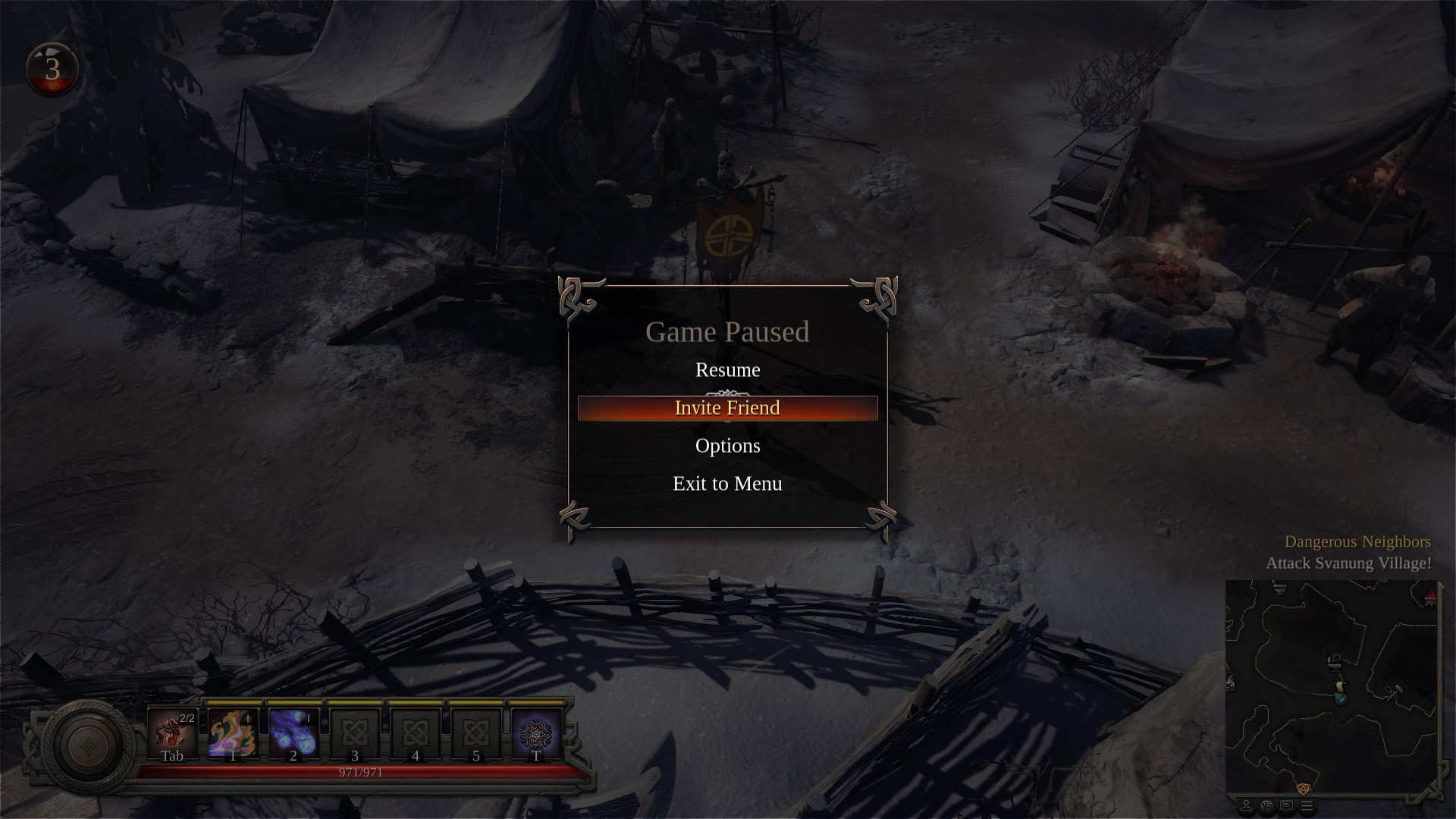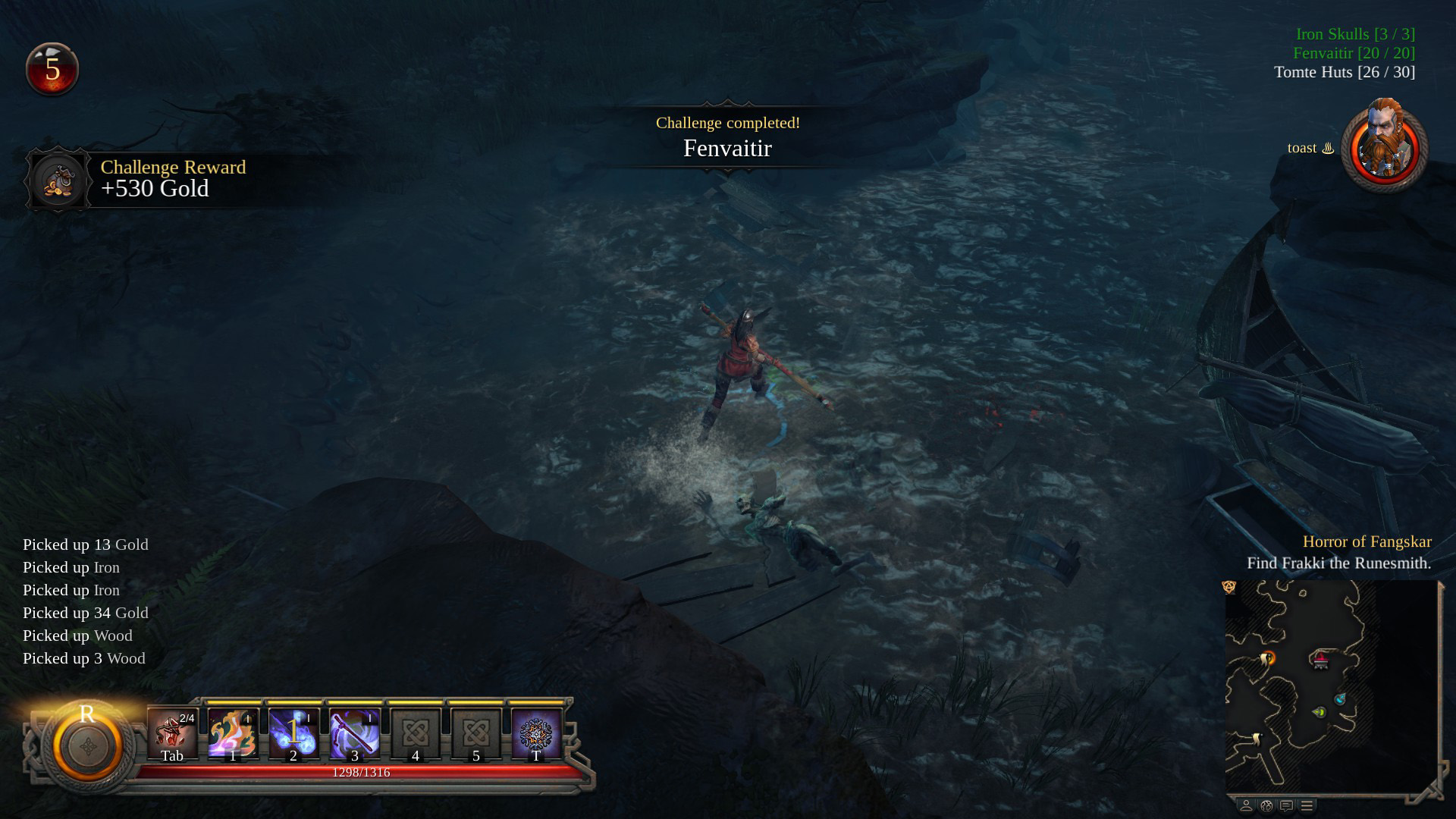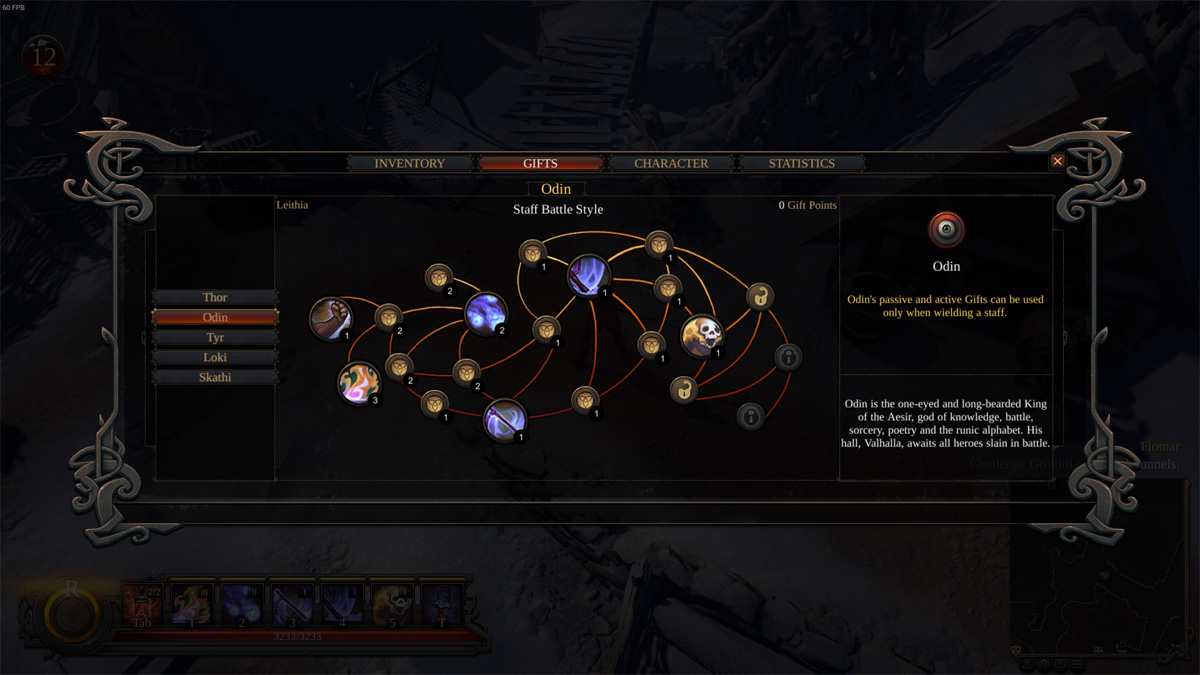The full story campaign can be played in solo or 2-player co-op to much the same effect. Since this is the case, I’ll be examining everything from the co-op perspective. When playing co-op, one player will load up a game and then invite the other player directly into it. This is done from the Stronghold, which is the game’s town/hub area. The game’s host determines which missions can be done, so for players who want to consistently play with the same partner, they’ll want to make sure they always have the same person hosting the game. While each player retains ownership of his or her character to play in other solo or co-op campaigns, Player 1 is in solo possession of the campaign progress. If Player 2 fires up a solo game with their co-op character, none of the story progress will carry over and he or she will have to start over from the beginning of the story. The host player also controls mission selection, NPC/story object interaction, and Stronghold upgrading. Drops and mission rewards, however, are player-based (each player will only ever see their own loot). Strangely enough, there’s also no way for the players to trade anything with each other.

Once the two players are in the Stronghold together, the host can select any of the currently unlocked missions and the game automatically loads both players into it. These missions take between 15 and 30 minutes to complete, depending on the mission and whether the players are trying to complete the optional challenges. Each one has three optional challenges that provide large chunks of resources as rewards. These challenges include tasks such as killing a certain number of specific enemies, or picking up three Iron Skulls from treasure chests. Even if the players are split up on opposite sides of the map, their actions will contribute towards completing most of the challenges. The one exception to this is the challenges that require the player to pick something up off the ground - each player will have to make sure they grabbed the item. These challenges strike a nice balance for completionists and people who simply want to complete the main objectives; the extra rewards are nice, but it’s not a huge loss for players who opt to not do them. Most missions end with a boss battle, requiring both players to step into a circle to open a door to the encounter. Once the boss is defeated, the mission is complete, and each player will receive rewards (usually some kind of combination of gear, upgrade runes, resources, and XP).

There are primarily two different kinds of progression in Vikings: character progression and Stronghold progression. Character progression is based around a pretty standard leveling and gear system, which I briefly touched on before. The skill lines (called “Gifts”), interestingly enough, are inherently tied to the weapon types. Each skill line is associated with a Norse god (e.g. Odin, Loki) who blessed users of a certain weapon. While you can spend your points however you want across the five Gift trees, it doesn’t seem greatly encouraged, since players can only utilize the active and passive skills of a line if they are wielding the correct weapon.

For example, my character solely invested in the Odin line. This gave me access to elemental spells (e.g. fireball, ice blast) that could only be used when I had a staff equipped. Some of the passive benefits I received were armor boosts to cloth armor and increased crit chance, but again, only when using staves. In order to use skills from multiple trees, you’d have to swap weapons, which also completely changes your hotbar. Also, the two skill points you get a level can eventually be completely spent on one skill tree when you begin to have access to higher tiers of skills. These higher tiers generally just make the Gift more potent (i.e. increase the damage on an active Gift, or increase the percentage increase of a stat in a passive Gift). If you’re spreading skill points across more than one tree, you may find your arsenal to become weaker as the game goes on. There’s also no way to respec skill points, so you’ll be locked into your decisions.